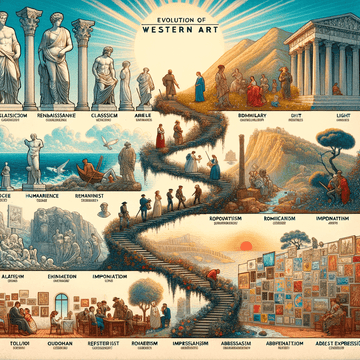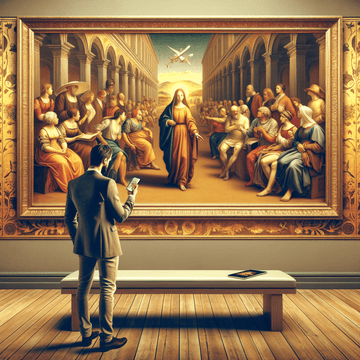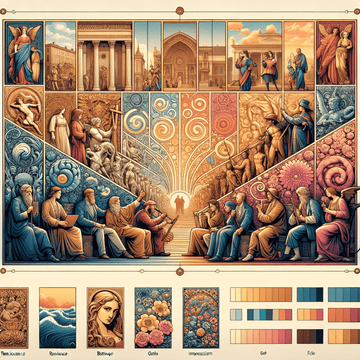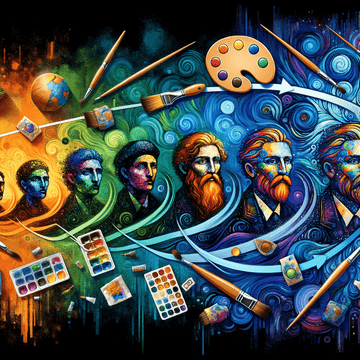"The Evolution of Western Art: From Classicism to Abstract Expressionism Explained"
Apr 10, 2024

The Evolution of Western Art Styles: From Classicism to Abstract Expressionism
Art has always been a reflection of society, culture, and the individual artist's vision. Throughout history, Western art has gone through significant changes and developments, shaping the way we perceive and create art today. From the beauty and order of Classicism to the bold and expressive strokes of Abstract Expressionism, each art movement tells a unique story of artistic evolution.
Classicism
Classicism, which emerged in ancient Greece and Rome, focused on harmony, proportion, and symmetry. Artists during this period were inspired by the ideals of ancient Greek art and aimed to create timeless and idealized representations of the human form. Classicism celebrated beauty, balance, and perfection, with works often depicting mythological themes and heroic figures.
Renaissance
The Renaissance marked a revival of Classical art and culture in Europe during the 14th to 17th centuries. Artists like Leonardo da Vinci, Michelangelo, and Raphael embraced humanism, depicting realistic portrayals of the human body and emotions. The period saw a renewed interest in perspective, anatomy, and naturalism, leading to groundbreaking innovations in art techniques and styles.
Baroque
The Baroque period, which followed the Renaissance, was characterized by grandeur, drama, and emotional intensity. Baroque artists like Caravaggio and Bernini created dynamic and theatrical compositions, filled with rich colors, exaggerated lighting, and elaborate details. Baroque art aimed to evoke strong emotions and engage viewers on a visceral level.
Impressionism
In the late 19th century, the Impressionist movement challenged traditional artistic conventions with its focus on light, color, and fleeting moments. Artists like Claude Monet, Edgar Degas, and Pierre-Auguste Renoir used loose brushwork and bold colors to capture the essence of a scene rather than create detailed representations. Impressionism revolutionized art by emphasizing subjective experiences and the artist's unique perspective.
Abstract Expressionism
Abstract Expressionism emerged in the mid-20th century as a radical departure from traditional forms of representation. Artists like Jackson Pollock, Willem de Kooning, and Mark Rothko embraced spontaneity, gesture, and emotion in their art, creating non-representational works that focused on the act of painting itself. Abstract Expressionism emphasized individual expression, emotion, and the power of art to convey universal truths.
Interested in exploring more art like what we've discussed today? Our collection offers a diverse range of styles, including Baroque and beyond. Feel free to dive into our world of artistic wonders by visiting https://metalposterart.com/collections/baroque. Whether you're looking to admire or to acquire, there's always something captivating waiting for you. We're excited to share our passion for art with you.







